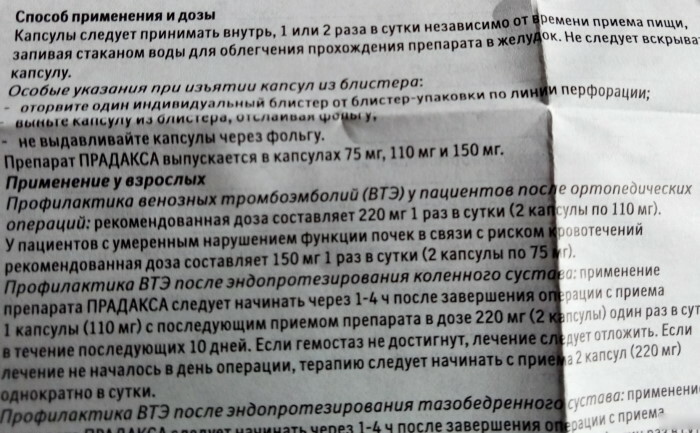Content
- Characteristics of the drug
- Basic instructions
- Analogs
- Rabimac
- Rabiet
- Ontime
- Omez
- Omeprazole
- Gastrozole
- Barol
- Price of funds
- Video about the drug Rabeprazole
Rabeprazole is a drug responsible for slowing down processes of production of gastric juice. It has several structural counterparts that can be purchased at a low price. The drug belongs to the category of proton pump inhibitors. The drug is characterized by antiulcer action.
Characteristics of the drug
Rabeprazole (analogues and prices for them are presented later in the article) is a drug responsible for normalizing the functioning of the digestive tract. The medication is marketed in the form of hard capsules coated with an easily dissolving shell. Their body is made of gelatin. Inside the capsules there are pellets - small yellowish-white granules. The active ingredient is sodium rabeprazole (no more than 10 mg).
Additional components:
- titanium dioxide;
- indigo carmine;
- karmazin (dye).
An antisecretory drug helps to slow down the secretion of hydrochloric acid by inhibiting the AT phase on the surface of mucosal cells. For the drug, anticholinergic properties are not characteristic.
The effect develops after 45-60 minutes. after the first dose. The therapeutic effect lasts for 48 hours. The drug form is completely dissolved in the intestine in 2.5-3 hours. The drug is highly bioavailable. The maximum concentration of rabeprazole is observed in the blood after 4 hours. The presence of food in the stomach does not in any way affect the rate of absorption. The active ingredient binds to blood proteins by 95-98%. Excretion of metabolites is carried out through the kidneys and intestines.
Basic instructions
In most cases, the drug is prescribed when the characteristic symptoms of dyspeptic disorders appear, caused by the accelerated production of hydrochloric acid. These include belching, heartburn, and esophageal discomfort.
Like most medicines, Rabeprazole has a number of contraindications:
- severe renal and hepatic impairment;
- childhood;
- the period of gestation and breastfeeding;
- galactose, glucose deficiency;
- intolerance to fruit sugar;
- lack of isomaltose, sucrase;
- hypersensitivity.
If the individually selected treatment regimen is not followed, the risk of side effects is quite high. They are usually mild or mild. After discontinuation of the drug, the ailments go away on their own.
Side effects from the side:
- lymphatic and circulatory system - leukopenia, neutropenia, thrombocytopenia; from immunity - allergic systemic or local reactions;
- organs of the digestive tract - an excess of magnesium, increased severity of symptoms of dyspepsia;
- biliary system - hepatic encephalopathy, jaundice, increased bilirubin, hepatitis;
- musculoskeletal system - arthralgia, myalgia;
- urinary system - interstitial nephritis.
A woman may develop gynecomastia against the background of exceeding the therapeutic norm or non-compliance with the dosage regimen. Also, side effects often develop in people against the background of the rapid growth of malignant neoplasms in the organs of the digestive tract.
The capsules of the drug must be taken whole, without chewing or dissolving in water. The rate of absorption of the active ingredient is not affected by the presence of food in the stomach and the time of day. Patients with severe renal or hepatic insufficiency may need to adjust the dosage regimen downward.
The treatment regimen is selected individually, depending on the patient's diagnosis. The capsules are taken orally. The daily rate is no more than 10 mg. The course of treatment varies within 14-20 days.
Analogs
Rabeprazole (analogs and drug prices are provided for review) has a number of structural substitutes with similar therapeutic effects.
They may differ in composition, cost, dosage regimen and indications for use.
- Rabimak;
- Rabiet;
- Ontime;
- Omez;
- Omeprazole;
- Gastrozole;
- Barol.
Analogs of the original drug can be purchased at pharmacies at affordable prices.
Rabimac
The medication contains the same active ingredient as Rabeprazole. Additional components may vary. Rabeprazole (20 or 10 mg) acts as an active ingredient. Unlike the original drug, the analogue goes on sale in the form of yellow or brownish-red rounded tablets. Additional components: magnesium stearate, methyl and propyl cellulose.

Rabimac, like Rabeprazole, belongs to the category of stabilizing drugs that reduce the concentration of hydrochloric acid. It is most commonly prescribed as a proton pump inhibitor. Before admission, the patient must undergo a series of additional examinations to exclude the presence of a malignant tumor in the organs of the digestive tract.
The instructions for use indicate the following pathologies:
- dyspeptic disorders not caused by ulcerative lesions;
- reflux gastritis;
- damage to the mucous membrane of the stomach and duodenum with peptic ulcers;
- the presence of Helicobacter Pylori bacteria in the stomach;
- ulcerative lesions of the stomach and duodenum (regardless of the stage of the course);
- chronic gastritis (including periods of exacerbation).
Rabeprazole and Rabimak have approximately the same contraindications. Both drugs are not prescribed for children, pregnant and lactating women and people suffering from hypersensitivity or a tendency to develop allergic reactions.
The analog can affect the ability to concentrate with prolonged use, so people whose work activity is associated with driving a car should better refrain from taking pills. Elderly patients may need to adjust the dosage regimen.
The original medication and the analogue have a different scheme of application.
Dosing regimen for patients:
- with ulcerative lesions of the digestive tract - no more than 40 mg per day;
- with ulcerative dyspepsia - no more than 40 mg per day (2 doses);
- with other pathologies of the digestive tract - no more than 20 mg per day.
The course of treatment is 3-16 weeks. You need to take Rabimak according to an individually selected scheme.
If Rabeprazole does not provoke the development of side effects, then with prolonged use of Rabimac, the following ailments may occur:
- increased sleepiness;
- sweating;
- mild convulsions;
- pharyngitis;
- stomatitis;
- dryness in the mouth.
Patients may also complain of recurrent epigastric pain.
Rabiet
Rabeprazole (analogs and prices must be studied in advance, before buying) is absorbed rather quickly. Rabiet, like the original drug, is marketed in the form of blue-white gelatin capsules with yellowish-white pellets inside.
The composition of both medicines is the same. The active ingredient is sodium rabeprazole - no more than 10 mg.
Additional substances:
- dye (blue, black, white);
- titanium dioxide;
- crospovidone;
- gelatin.
Rabiet, like the original medicine, has an antisecretory effect. With systematic use, a slowdown in the rate of synthesis of hydrochloric acid is observed. Rabiet are classified as proton pump inhibitors. For the drug, the anticholinergic effect is not typical.
Rabiet, like Rabeprazole, completely dissolves in the intestine. The therapeutic effect lasts for a long time (24-48 hours). The active ingredient is 93-95% bound to blood cells. The drug is highly bioavailable.
Rabiet can be considered a structural analogue of Rabeprazole.
For medicines, the same indications for use:
- heartburn;
- belching;
- pain in the esophagus.
Contraindications are prescribed in the instructions:
- hepatic, renal failure;
- childhood;
- the period of gestation and breastfeeding;
- intolerance to fruit sugar;
- lack of isomaltose or sucrose.
Drugs are not prescribed for people suffering from hypersensitivity to sodium rabeprazole.
Side effects usually occur against the background of an incorrectly selected treatment regimen. Patients complain of rash, dizziness, dry mouth, flatulence, epigastric pain, constipation, or diarrhea. The scheme of administration of Rabeprazole and Rabiet is the same. The daily dose is not more than 10 mg. The course of treatment varies within 14-20 days.
Ontime
The mechanism of action of the analogue and the original drug is approximately the same. Both medicines contain sodium rabeprazole, which acts as an active ingredient. The concentration ranges from 10-20 mg.
The analog has other auxiliary components:
- magnesium oxide;
- magnesium salt of stearic acid;
- mannitol.
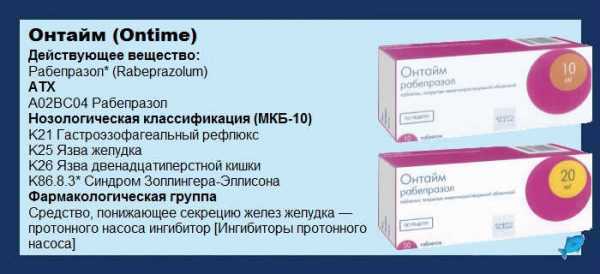
Ontime goes on sale in the form of tablets, each of which is coated with an easily dissolving shell. For both medicines, antiulcer and antisecretory action is characteristic. Rabeprazole, as an active ingredient, inhibits the synthesis of hydrochloric acid, suppressing the enzymatic activity of the ATP phase.
Like the original drug, Ontime, when it enters the intestine, completely dissolves after 45-60 minutes. The maximum concentration in the blood is determined after 3-3.5 hours. Excretion of metabolites is carried out by the kidneys. Also, both drugs have the same indications for use.
The following pathologies are prescribed in the instructions:
- ulcerative lesions of the stomach and duodenum (especially during an exacerbation);
- GERD of erosive and ulcerative nature;
- damage to the stomach by bacteria Helicobacter Pylori;
- gastrinoma.
Ontaym, like the original drug, is contraindicated in children, pregnant and breastfeeding women and people suffering from liver diseases. Also, patients with an individual intolerance to rabeprazole should be discarded. Unlike the original drug, the analogue has an extensive list of side effects.
They are observed from the side:
- hematopoietic system - thrombocytopenia, leukopenia, neutropenia;
- central nervous system - depression, dizziness, irritability, prolonged migraine, drowsiness, insomnia;
- organs of vision - partial loss of acuity;
- respiratory organs - bronchitis, sinusitis, pharyngitis, runny nose, suffocating cough;
- organs of the digestive tract - encephalopathy, hepatitis, gastritis, dyspeptic disorders, stomatitis, constipation, dry mouth, belching, urge to vomit, flatulence;
- skin - malignant erythema, toxic necrolysis, hyperhidrosis, itching, rashes;
- musculoskeletal system - arthralgia, convulsions, myalgia;
- urinary system - urinary retention, nephritis.
Ontime tablets must be drunk whole, without dissolving in water or chewing. The daily dose is not more than 20 mg.
Omez
Rabeprazole (analogues and prices for them fluctuate depending on the manufacturer and the form of release) does not require prescription dispensing from pharmacies, like Omez. Unlike the original drug, the analogue has several drug forms: lyophilisate and capsules. The active ingredient is omeprazole (concentration may vary). The role of auxiliary elements is water, sodium sulfate, sucrose, sodium phosphate.
Omez, like Rabeprazole, belongs to the category of antiulcer drugs, proton pump inhibitors. The active ingredient is responsible for slowing down the processes of gastric acid secretion. Gelatin capsules dissolve quickly in the intestines. The maximum concentration of the active component in the blood is observed after 3-4 hours.
The therapeutic effect lasts for 24 hours. Instructions for use of Omez are slightly different from the annotation to Rabeprazole.

It contains the following indications:
- systemic mastocytosis;
- gastroesophageal reflux gastritis;
- pancreatitis (especially in the acute stage);
- lesion of the stomach with peptic ulcers;
- ulcerative lesions provoked by stress;
- long-term use of non-steroidal anti-inflammatory drugs, which provoked ulceration of the stomach walls;
- esophagitis of the erosive and ulcerative type.
Unlike the original drug, Omez solution can be administered intravenously. The drug is not prescribed for children, lactating women, pregnant women and people with allergies. According to reviews, the drug is well tolerated by patients.
The instructions contain the following side effects:
- fever;
- rashes on the skin;
- myalgia;
- myasthenia gravis;
- anxiety;
- headache;
- leukopenia;
- flatulence;
- bouts of nausea;
- pain in the epigastric region;
- thrombocytopenia;
- arthralgia;
- bronchospasm.
The method of taking capsules for the analogue and the original drug is identical. The dosage form is taken entirely without chewing or dissolving in water. The daily rate is no more than 20 mg. The course of application is 14-20 days. The daily norm of the solution is not more than 80 mg.
Omeprazole
Omeprazole can be considered a generic version of Rabeprazole. Medicines have slightly different forms of release. Omeprazole is also marketed in the form of a lyophilisate. The active ingredient is the substance of the same name in different concentrations. Auxiliary additives - sodium hydrogen phosphate, additives E217, E219, E171, E170, disodium edetate, sodium hydroxide.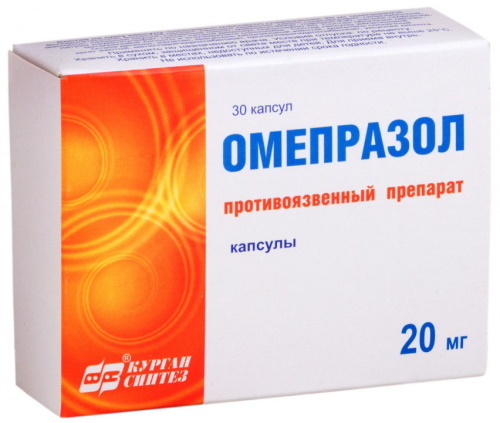
Both drugs belong to the category of proton inhibitors that can have antiulcer effects. The principle of operation for Rabeprazole and Omeprazole is approximately the same - the active components block the synthesis of hydrochloric (hydrochloric) acid at the final stage.
The therapeutic effect is observed after 45-60 minutes. after the first application. The maximum concentration of the substance in the plasma is observed after 120 minutes. Omeprazole, like Rabeprazole, works within 24 hours. Indications for the use of analogs are slightly different from the original ones.
The drug is prescribed for:
- bouts of nausea;
- heartburn;
- flatulence;
- stomach pain;
- lesions of the stomach with the bacterium Hilocobacter Pylori;
- reflux esophagitis;
- ulcerative relapses.
Medicines are not prescribed for children, nursing mothers, pregnant women, and people with malnutrition. Omeprazole, unlike the original, has an extensive list of side effects.
The instructions contain violations by:
- central nervous system - overexcitation, depression, dizziness, headache;
- skin - exudative erythema, alopecia, itching, skin rash, photosensitivity;
- locomotor system - myasthenia gravis, arthralgia, myalgia;
- hematopoietic system - agranulocytosis, thrombocytopenia, pancytopenia, leukopenia;
- organs of the digestive tract - hepatitis, liver dysfunction, dry mouth, stomatitis, flatulence, nausea, diarrhea, constipation, pain in the epigastric region.
The daily norm of Omeprazole exceeds the permissible dose of Rabeprazole by 2 times. The patient can take no more than 2 capsules per day. The daily norm of the solution is not more than 80 mg.
Gastrozole
Rabeprazole, according to reviews, is well tolerated by patients. Its counterparts can also be purchased at an affordable price. Gastrozole, like the original drug, is marketed in capsule form. The active ingredient is omeprazole.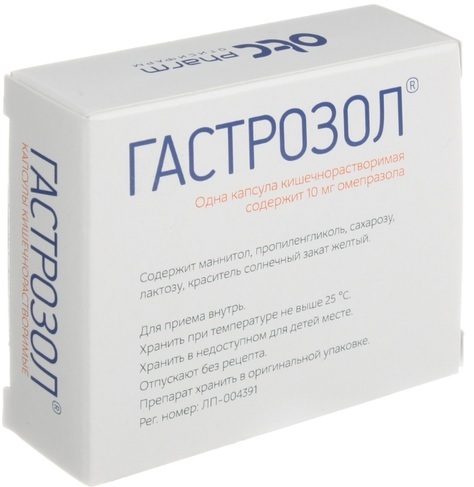
Additional elements:
- hypromellose;
- lactose;
- propylene glycol;
- mannitol;
- sucrase;
- titanium dioxide;
- calcium carbonate;
- sodium hydroxide;
- talc.
The mechanism of action of Rabeprazole and Gastrozole is the same - both drugs are proton pump inhibitors and have an antiulcer effect. The active substance suppresses the activity of the AT phase in the parietal cells of the organ.
The capsule dissolves quickly in the intestine. The active ingredient enters the bloodstream and is evenly distributed over tissues and cells. The maximum values of omeprazole are reached after 120 minutes. Gastrozole and Rabeprazole have the same indications and contraindications. Drugs are not prescribed during pregnancy, lactation, in childhood and in the presence of individual intolerance to omeprazole.
The drugs help fight the following pathologies:
- ulcerative lesions of the duodenum and stomach;
- endocrine adenomatosis;
- mastocytosis;
- ulcerative lesions caused by a stressful situation;
- non-steroidal gastropathy;
- reflux esophagitis.
The medication is also used to destroy the bacteria Helicobacter Pylori. The side effects of Rabeprazole and Gastrozole are also about the same.
In rare cases, patients complain about:
- flatulence;
- stomatitis;
- hepatitis;
- diarrhea;
- constipation;
- bouts of nausea;
- vomiting;
- overexcitation;
- headache;
- dizziness;
- weakness;
- joint pain;
- alopecia;
- rash;
- hives;
- fever;
- decreased visual acuity.
The scheme of application of Gastrozol is standard. The capsules are drunk whole, without chewing or dissolving them in water. The daily norm is no more than 20 mg, which is equivalent to 1-2 capsules. The course of application is 14-20 days.
Barol
Barol can be considered a structural analogue of Rabeprazole. Both medicines are sold in capsule form and contain rabeprazole sodium.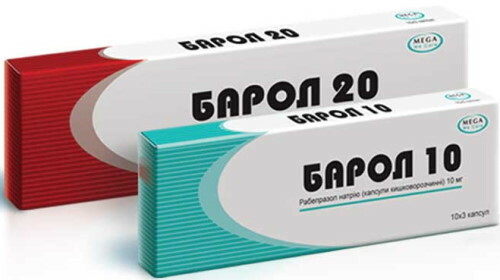
Additional components may vary slightly:
- titanium dioxide;
- black, red dye (iron oxide);
- water;
- magnesium carbonate;
- talc;
- macrogol.
Medicines have antisecretory and antiulcer effects, acting as proton pump inhibitors. Usually, Rabeprazole and Barol are prescribed for gastroesophageal reflux gastritis, ulcerative lesions of the duodenum and stomach and in order to destroy the bacteria Helicobacter Pylori.
Barol, like Rabeprazole, should not be taken during pregnancy and during breastfeeding, in childhood and in the presence of an individual intolerance to the drug. The daily norm is no more than 20 mg (1-2 capsules). The treatment period is 2-3 weeks.
Price of funds
The cost of drugs directly depends on the manufacturer and the method of sale.
Approximate prices:
| Name | Price |
| Rabeprazole | 320-500 rub. |
| Rabiet | 280-450 rub. |
| Ontime | RUB 250-480 |
| Omez | 270-500 rub. |
| Omeprazole | RUB 220-450 |
| Rabimac | RUB 300-550 |
| Gastrozole | RUB 250-500 |
| Barol | RUB 300-550 |
During the period of using the medicines listed above, it is strictly forbidden to consume alcoholic beverages.
Rabeprazole, like its analogs, helps to reduce acidity. The prices for the drugs are quite reasonable. You need to buy medicines only at pharmacy kiosks.
Video about the drug Rabeprazole
Rabeprazole tablets instructions for use:

